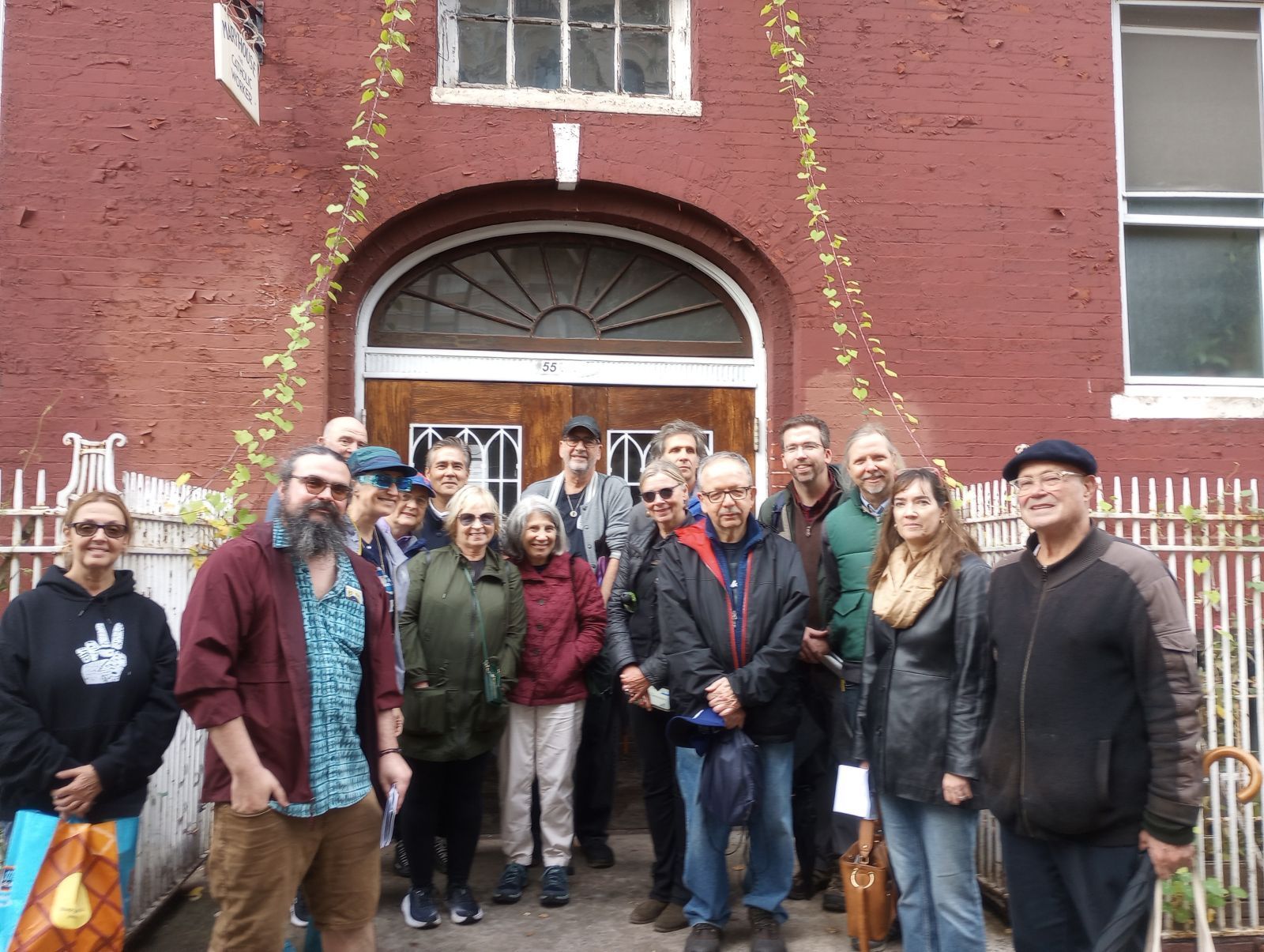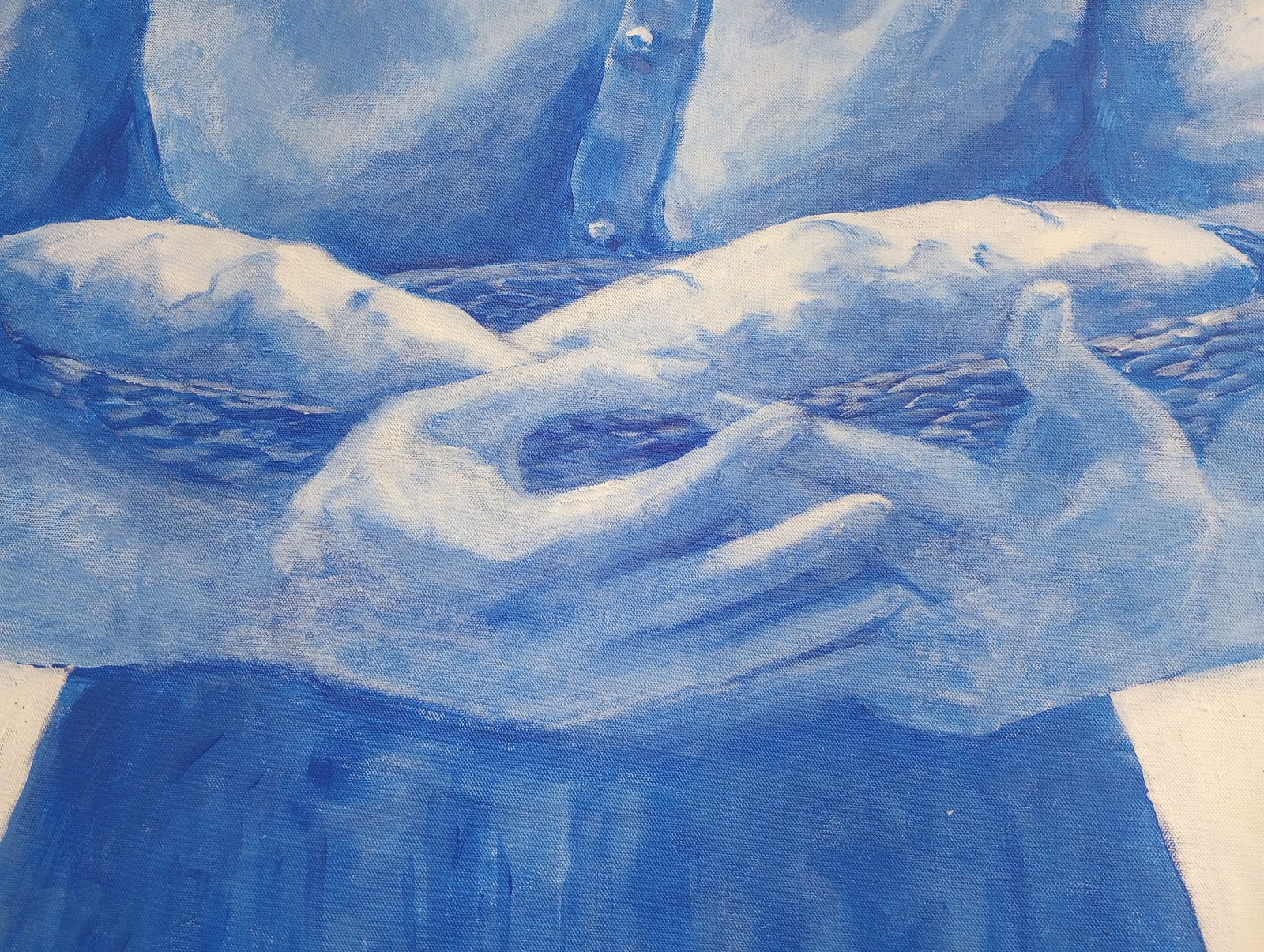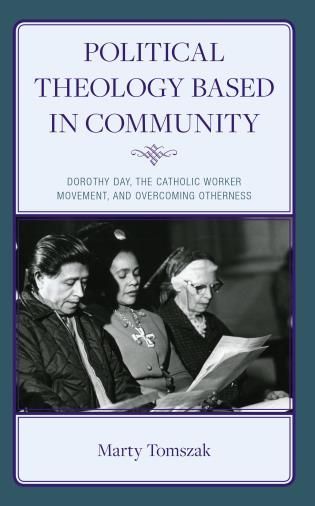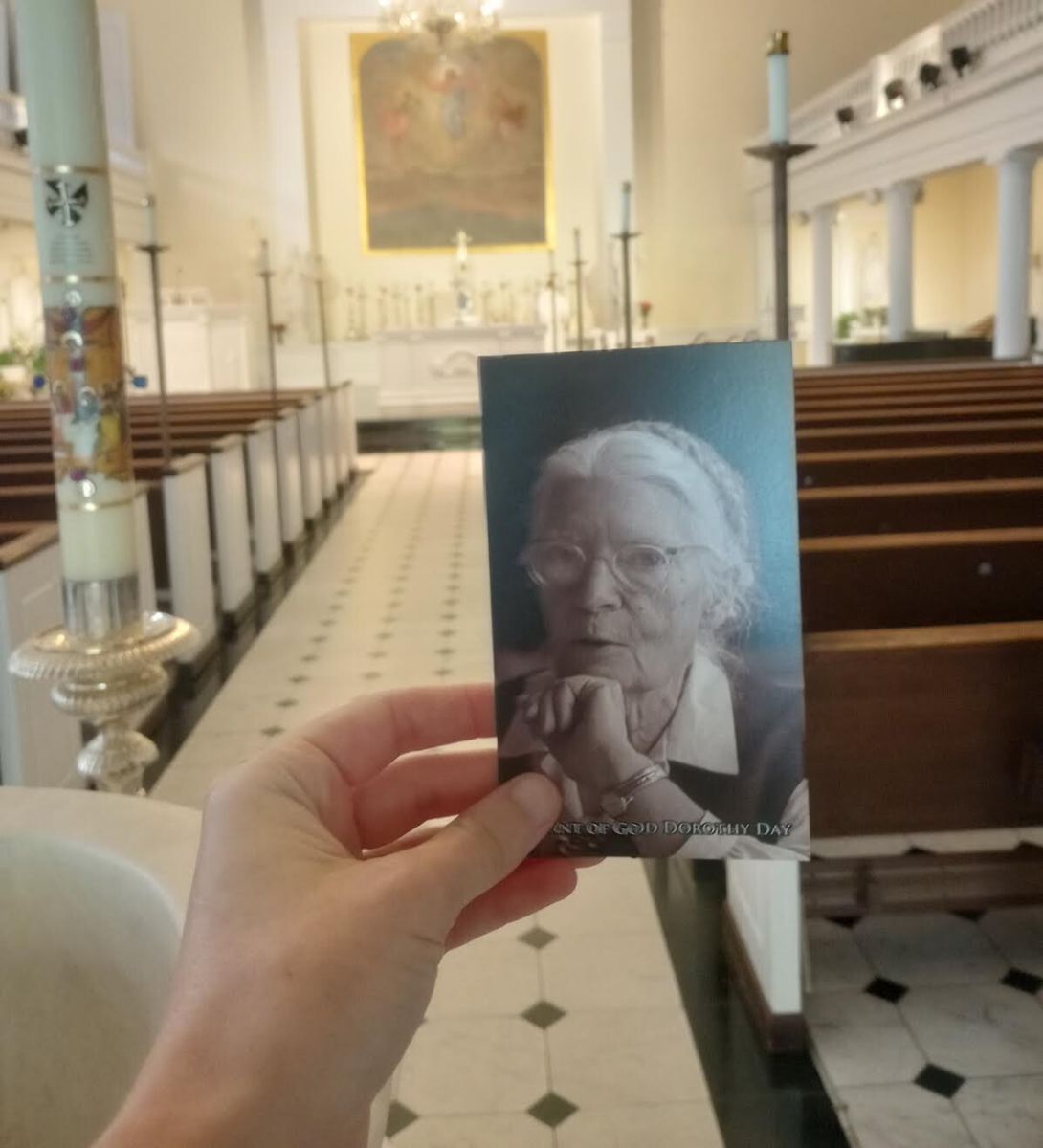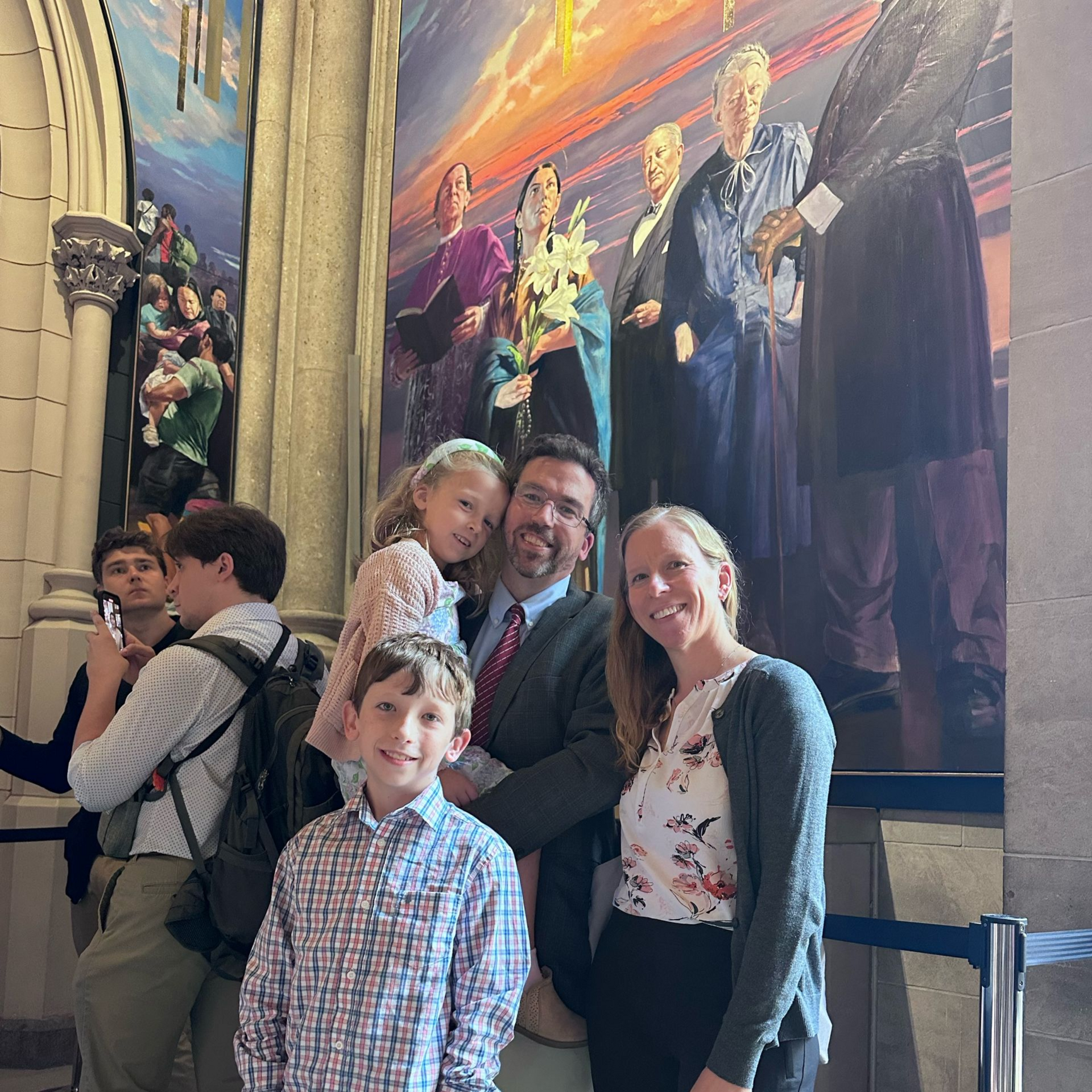Dear members and friends of the Dorothy Day Guild,
Greetings from Maryhouse! I’m writing to you today from a cozy library in the home where Dorothy spent the last few years of her life. Dorothy’s presence feels alive in this house, and in the New York Catholic Worker community. It has been a gift to chat on the wide, generous staircases, help serve lunch in the dining room that Dorothy envisioned as a place of respite and welcome to the unhoused women of the neighborhood, pray in the chapel where she was waked, and to fall asleep to the sounds of Third Street blowing in through the lace curtains. As we have been preparing for some in-person Guild events to close out Dorothy’s 125th year, I am so grateful to our friends at Maryhouse for their hospitality.
News from New York
Saturday afternoon marked our first-ever walking pilgrimage, beginning at Union Square and winding southwards to the various places where Dorothy played, prayed, protested, and offered the spiritual and corporal works of mercy for six decades of the last century. Stepping into her footsteps, visiting the places she loved, and remembering the people she cared for brought Dorothy’s New York to life. And, as every good pilgrimage ends with a feast, we concluded our time together by breaking bread with the Maryhouse community for mass and supper! If you weren’t able to join us this time, we hope you’ll be able to visit these holy sites yourself the next time you’re in Manhattan.
Speaking of pilgrimage, a recent reflection in Our Sunday Visitor by Adele Chapline Smith, whose mother helped start a Catholic Worker community in Rochester, New York, discussed Dorothy’s Eucharistic devotion and experiences of contemplation in the busy neighborhoods of the Bowery and the East Village. Dorothy’s quiet practice of remaining “in a spirit of thanksgiving” after receiving the Eucharist made a strong impression on Adele’s mother, who remembered their conversation for decades afterwards. We’ve heard from many people who knew or had even briefly met Dorothy that those encounters stayed with them for the rest of their lives. Many of you have these personal recollections of Dorothy either from your own experiences or passed down from friends or family members who knew her. We love hearing these Dorothy-anecdotes and reflections on how these encounters shifted the trajectories of individual lives in great and small ways, so if you have stories you’d like to share, please reach out to us!
Events and Recommendations
We have two more in-person events to help us celebrate the conclusion of Dorothy’s 125th year, both up at the Guild’s new home at Manhattan College. This Thursday is the reception and artist talk for Kristi Pfister’s Radical Action: Tracing Dorothy Day. Words really can’t do justice to this stunning installation, which brings the beach together with the soup line and the newspaper office. Kristi’s installation, currently on the main floor of Manhattan College’s O’Malley Library, is flooded with light. As she writes in her artist’s statement,
“Suspended columns as a concept grew out of my interest in their cylindrical form, but without the weight. Weightlessness creates a sense of transcendence and fast forwards these light filled columns into contemporary times– they are flexible, translucent and permeable. The columns encircle an idea rather than being made of physical matter. They are a reinvention of both inherent and inherited associations relating to capitalism, power, and democracy… The columns move as you walk past them– a metaphor for the active mission of the Catholic Worker movement.”
Looking ahead to the Feast of All Souls, we’re excited to welcome Lincoln Rice back to New York for the annual Dorothy Day Lecture, also up at Manhattan College. Lincoln’s critical edition of Maurin’s Easy Essays is a gift to scholars, activists, and anyone who wants to learn more about the intellectual heritage of the Catholic Worker movement. As we move towards the close of the harvest season, we look forward to learning more about what Peter can teach us about the land and community, what we owe to each other, and what we receive from the places where we make our homes. Lincoln’s talk takes place on
Thursday, November 2nd at 6:30 pm in the O’Malley Library at Manhattan College. We hope to see you there!
A few words from Dorothy
The Feast of All Saints is quickly approaching, and in that little Triduum of Halloween, All Saints, and All Souls, the liturgical calendar reminds us how intimately we are all bound together, the living as well as the dead. It can be difficult to remember our connections to one another, particularly as war rages piecemeal in so many places around the world. Dorothy spent her life reflecting on and living out that connection, both before and after her conversion. As a Catholic, she spoke of that unity in terms of the Mystical Body of Christ and of the communion of saints. We would like to leave you with her words from January of 1944, a time much like the present:
Charles Peguy wrote: “I am afraid to go to Heaven alone. God will say to me, ‘Where are the others?’”
In one sense we live and die alone in an awful solitude. But, joyful thought, we are all members one of another, members of the same body and our Head is Jesus Christ…
Here, too, is the idea of the communion of saints. “When the health of one member suffers, the health of the whole body is lowered.” And contrariwise, if one is uplifted, he lifts others with him. We share in the honor and glory and beauty and love of others. We can draw upon their merits. We are inspired by their example. We are followers of Christ, our Head.
We are looking forward to sharing further updates from the Guild with you next month, including a new website, so stay tuned for an upcoming email from us. In these last days of October, leading up to the month of All Souls, please join us in praying for the repose of the many recent victims of war and violent conflict and as always, for peace.
Yours,
Dr. Casey Mullaney, on behalf of the Dorothy Day Guild



